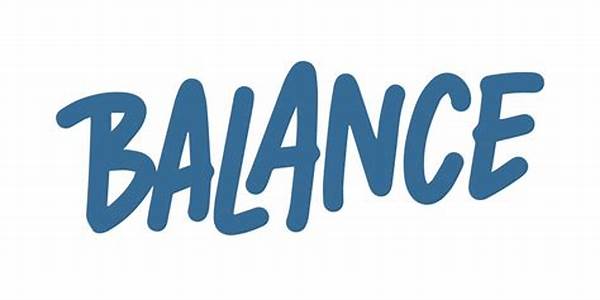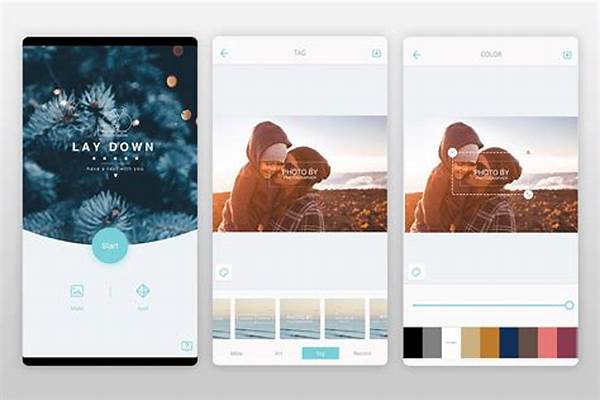Hey there, design enthusiasts! Today, we’re diving into a concept that’s all about making things look just right: aesthetic balance in design. It’s like when you look at a room, graphic, or website, and everything just feels perfectly placed and visually satisfying. You might not always be able to put your finger on why it works, but that’s the magic of balance!
Read Now : Visual Interpretation Shaped By Framing
The Importance of Aesthetic Balance in Design
Aesthetic balance in design is the secret sauce that turns chaos into harmony. Imagine a painting where all the elements are skewed to one side—everything feels off, right? Balance in design ensures that every element has its rightful place, contributing to a cohesive look. This isn’t just about symmetry, though symmetry can be a part of it. It’s about the relationship between contrasting elements like color, shape, scale, and space.
Think of it like a dance, where every element plays a role to keep the composition flowing smoothly. An imbalanced design can be unsettling and distract from the message you want to convey. On the flip side, well-balanced designs draw the eye seamlessly across the piece. Whether you’re working on a minimalist layout or an elaborate composition, understanding balance will help create that inviting aesthetic appeal.
In practice, achieving aesthetic balance involves experimenting with different arrangements until everything clicks into place. It’s like solving a visual puzzle – when you achieve the right harmony, it just feels satisfying. Let’s break down how you can incorporate this into your projects and the types of balance you might encounter!
Achieving Harmony in Your Designs
Discovering Your Style of Aesthetic Balance
Finding your groove with aesthetic balance in design is like picking an outfit—mix and match until it feels right. It’s not just about visual appeal; it’s about personality. Once you understand the feel each type of balance brings, you can start incorporating them into your designs in surprising ways.
Sometimes, tilting toward asymmetry can create excitement and energy, suitable for more adventurous projects. Meanwhile, symmetrical balance might just be the thing for corporate materials that need to feel solid and trustworthy. The key is to experiment and not be afraid to make bold choices while maintaining that harmonious appeal.
Design is your playground, and aesthetic balance is your guide. Whether you’re crafting a logo or a room layout, let these principles steer you toward the visual impact you crave.
Aesthetic Balance in Design: Ten Tips and Tricks
1. Start Simple: Begin with a basic layout and build from there to understand the balance.
2. Use a Grid: Helps in aligning elements for a clean design.
3. Mind the Gaps: Space is crucial for aesthetic balance in design.
4. Think Hierarchically: Know which elements you want to emphasize.
5. Experiment with Contrast: Dark vs. light, large vs. small – make it interesting!
6. Check the Flow: Ensure the eyes move naturally across the design.
Read Now : Framing Rules In Photography
7. Consistency is Key: Repeated elements create a sense of familiarity.
8. Be Color Conscious: Limited palettes often contribute to balance.
9. Texture Play: Balance different textures to add dimension.
10. Trust Your Gut: Sometimes, feeling is the best guide.
How to Apply Aesthetic Balance in Real Life
Diving into the real-world application of aesthetic balance in design can be both empowering and transformative. Picture this: you’re setting up your living space or designing the new logo for your side hustle. How do you bring in that balance? Well, first off, assess what vibe you’re aiming for. Are you leaning towards calm and composed, or are you looking to inject a little chaos—deliberately, of course, for that wild, exciting feel?
Start small with manageable projects, like rearranging furniture or trying out color palettes in your room. You’ll see how different elements either compete for attention or smoothly blend together. Adjust their positioning, tweak their scale, play around with the arrangement until the overall look just ‘clicks.’ Sometimes it might feel like an instinctive process, and that’s okay! Trust that gut feeling—it’s often your best guide when determining aesthetic balance in design.
Slang Vibes: Getting Into Aesthetic Balance
Alright, let’s spill some tea on aesthetic balance in design. It’s all about that vibe-check, y’know? Imagine your Insta feed without any balance—total chaos, right? You want it to pop but still keep that chill flow. Balancing colors and shapes is like picking fit checks for the ‘gram. Every element needs to vibe well with each other without stealing the spotlight. It’s like finding your s/o—you’re different but match so finely together!
So when you’re vibing with your designs, keep it easy but don’t be afraid to flex those wild ideas. A little contrast, a dash of symmetry here and there, and you’ve got yourself a scroll-stopper. Remember, you’re the baddie of your design world; make sure everything stays snatched and in sync!
Wrapping Up Aesthetic Balance in Design
When all’s said and done, aesthetic balance in design is about visual finesse and creating an emotional connection through design. It’s that underlying whisper that tells people, whether knowingly or not, that the composition is striking all the right chords. Mastering this is akin to wielding a visual toolset that helps elevate any design from good to wow-worthy.
The beauty of aesthetic balance is that it’s versatile—applicable to any project you undertake. From art to architecture and digital spaces, it’s a universal language that helps convey what words sometimes cannot. Embrace the process as a journey rather than a destination, allow yourself the freedom to explore, experiment, and evolve. And remember, balance isn’t just a tool; it’s a feeling. Keep practicing, stay curious, and most of all, have fun designing!



